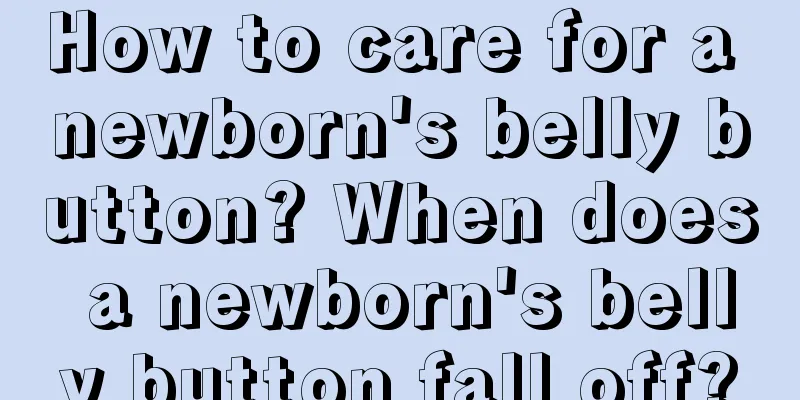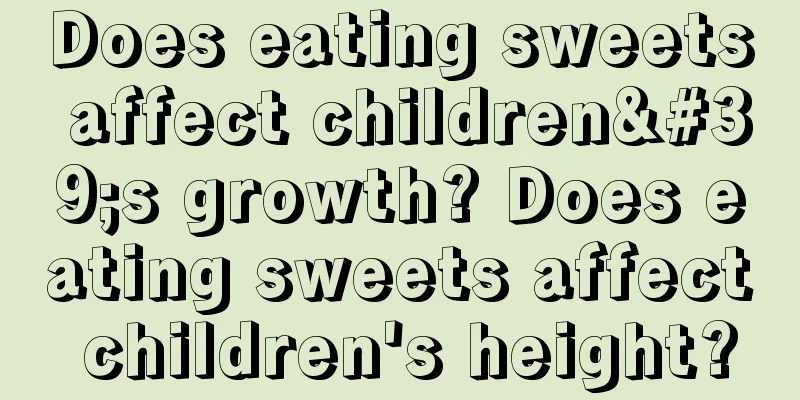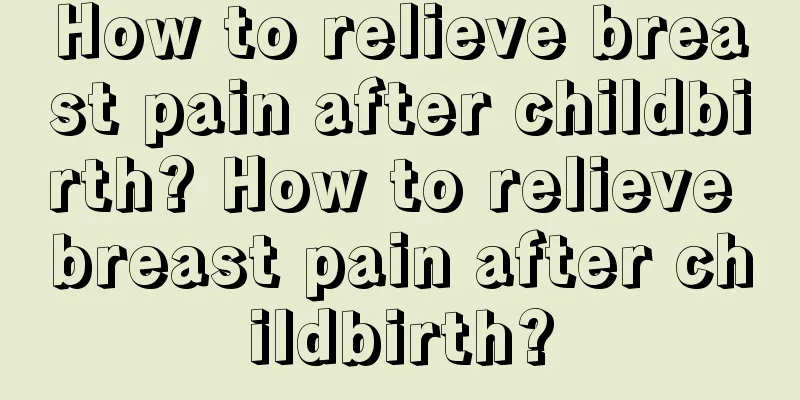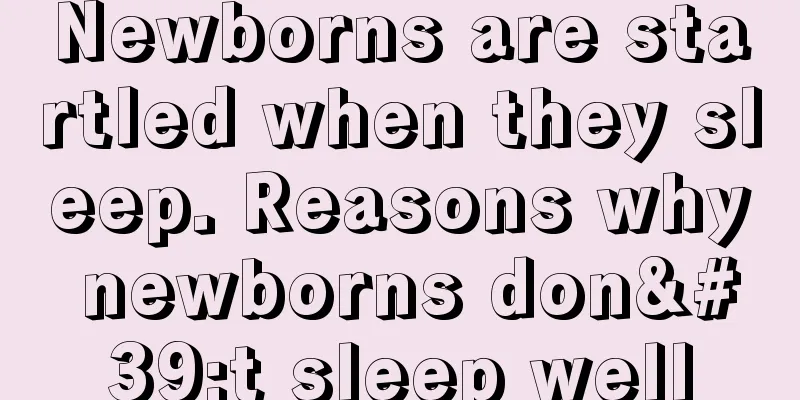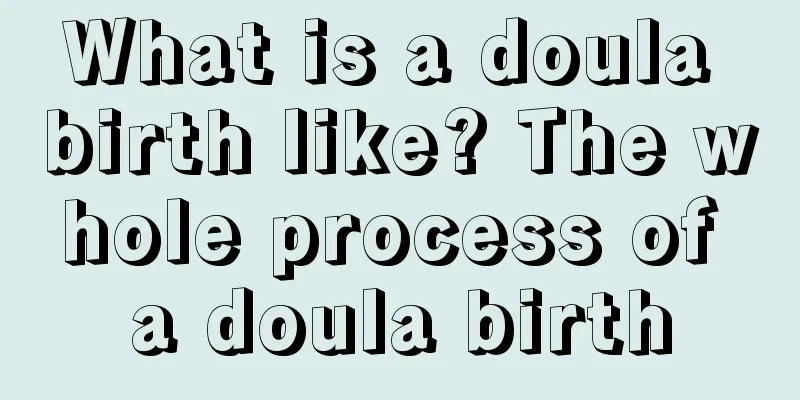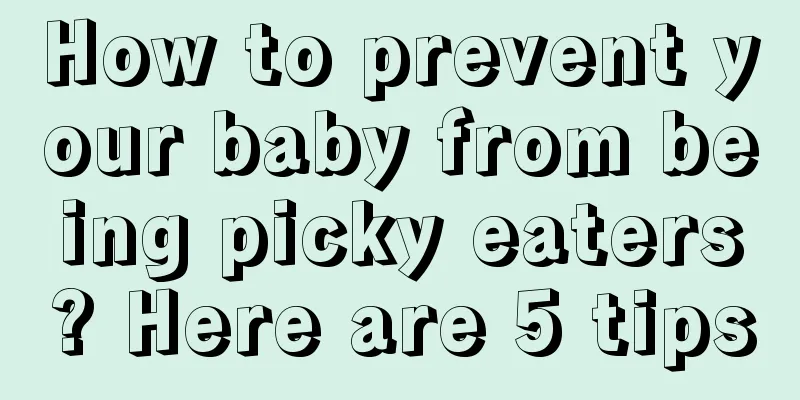What should I do if my baby has a fever? This is the right way to cook
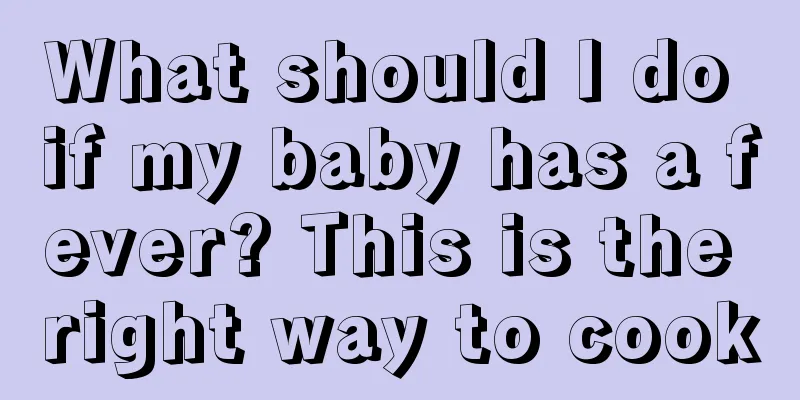
|
Babies who are just 4-6 months old have a weak immune system and are easily infected with bacterial diseases. How can we effectively solve this problem? Let's take a look at how to make your baby healthier and happier. Generally speaking, babies are most likely to have a fever between the ages of 2-5 and are in kindergarten. It is common for babies to have a fever more than 5-6 times a year, but many parents rush to the emergency room as soon as they see their children have a high temperature, even 2-3 times a day. This is actually unnecessary. Here are some things parents should pay attention to when their children have a fever at home. Fever definition:The core body temperature (ear temperature or rectal temperature) is greater than 38 degrees. 1. Newborn baby has fever:Because newborn babies have thinner and more curved ear canals and produce more secretions, measuring ear temperature is unreliable. Measuring rectal temperature is the most accurate. If a baby under three months old has a fever, there is a high chance of a serious bacterial infection due to insufficient resistance. Please do not hesitate to take the baby to a hospital for a detailed examination. 2. Fever in older children:First, please take your child to your doctor to determine the cause of the fever. If it is assessed to be a disease that can be treated with medication at home, you can follow the suggestions below. The body's temperature control center is in the thalamus of the human brain. Its function is like setting the temperature of the air conditioner, and it can determine the human body temperature. When the body is infected and inflamed, it produces a lot of inflammatory substances that stimulate the thalamus in the brain to increase body temperature (1). During this process (2), because of the heat generated, the young patient will experience a lot of discomfort, including rapid breathing and heartbeat, shivering all over the body, headache, nausea, and vomiting, etc. There are two things we can do here. The first is to keep the child warm, either by covering with a thick blanket or using a heating stove or lamp. The second is that if the child has congenital heart, lung or other metabolic diseases, or is really very unwell, antipyretics can be given to shorten the duration of the fever and the maximum temperature to relieve the child's discomfort. The rubbing alcohol and ice pillows that were commonly used in the past are no longer recommended. They take away the heat that the child has worked hard to generate, forcing the child to shiver more violently and gasp more to generate more heat. This not only aggravates the discomfort, but alcohol may cause blood vessels to constrict, making it more difficult to dissipate heat. The child may even overdose and be poisoned, so don't use them anymore. After the patient's body temperature reaches the preset temperature (3), the above discomfort will be reduced a lot. It is normal to look lazy. You always need to take a break after a marathon. (4) After that, the patient's temperature will start to drop, and his hands and feet will become hot and sweaty. At this time, please unbutton the child's clothes to ventilate, and add more water to help sweat. The temperature will drop in about 1-2 hours. After a proper rest, you will be full of energy again! Simply put, when parents find that their child has a fever, they can first touch the hands, feet and body. If the hands are cold and the body is hot, it is the chill period. Please put on more clothes to keep warm and give antipyretics as appropriate. If the hands are as hot as the body, it is the fever reduction period. Please open the clothes for ventilation or wipe them with warm water to speed up the heat dissipation. Giving antipyretics will not be of much help at this time. It is normal for the body temperature to fluctuate for two or three days due to a common cold, so don’t be too nervous. However, if the fever lasts for too many days or is accompanied by other dangerous symptoms, please return for a check-up immediately. Danger signs for babies:1. Fever in infants under three months old2. Significant decrease in urine volume3. Crying without tears4. Unclear consciousness, continuous drowsiness, restlessness when not feverish, dull eyes5. Cramps, muscle twitches, limb paralysis, paresthesia6. Persistent headache and vomiting7. Stiff Neck8. Coughing up blood9. Apnea, shortness of breath without fever, difficulty breathing, chest wall indentation during inspiration10. Slow or irregular heartbeat11. Unable to move normally, such as being unable to climb stairs or being out of breath after walking a short distance12. Purple spots on the skin13. Black lips, fingers, and toes |
<<: What foods should children eat to recover quickly from colds and fevers?
>>: Can babies take nutritional supplements? What should I pay attention to?
Recommend
Are noise-isolating earplugs disposable? How often should I change a pair of noise-isolating earplugs?
The effect of the noise-isolating earplugs is not...
Can laundry detergent wash down jackets? Can laundry detergent wash wool sweaters?
Laundry detergent has now become the choice of mo...
What should I prepare for my baby's weaning? What is the best time to wean my baby?
The baby can be weaned when he is about ten month...
How to care for newborns in summer Newborn care in summer
Spring is halfway through and summer is coming. H...
How are Shishuang diapers? Real evaluation of Shishuang diapers
Diapers are an indispensable item for every baby....
What are the effects of regular massage on infants and young children? How to arrange the daily routine for a one-year-old baby?
Frequent massage of infants and young children is...
What are the common problems of baby tooth decay? What should be paid attention to in tooth decay problems?
Dental caries, also known as tooth decay, is a co...
Can I eat snowy mooncakes during breastfeeding? Can I eat snowy mooncakes after I have given birth?
It is the Mid-Autumn Festival now, and various mo...
What should I do if I have difficulty defecating after a cesarean section? How can I defecate quickly after a cesarean section?
Postpartum constipation is a common problem for m...
How often should a baby take a bath in autumn? How often should a baby take a bath in autumn?
How often should babies take a bath in autumn? To...
How can pregnant women avoid dystocia and what can they eat to promote normal delivery?
Dystocia is the most worrying thing for mothers d...
How old is an electric toothbrush suitable for children? Is an electric toothbrush good for children?
When using an electric toothbrush, it brushes you...
What problems should be avoided when visiting a newborn?
Do you have any relatives or friends who have jus...
What is the best temperature to set the air conditioner at during the confinement period in winter? What is the appropriate temperature to set the air conditioner at in winter?
When you are in confinement in winter, mothers sh...
Are babies afraid of cold or heat? How to care for newborns?
For many new parents, taking care of a baby is a ...
